|
Getting your Trinity Audio player ready...
|
Hey Readers! Pollution and the emission of CO2 have caused global warming and climate change and today I will be explaining what is climate change, how does it affect the world and individuals and what is the COP26 summit and was it a failure or a success? Click the button down at the end of the post to listen to the article!
What is climate change?
The average weather in a location over a long period is referred to as climate. Climate change is the result of a change in the average conditions. Humans’ use of oil, gas, and coal for their houses, factories, and transportation is causing rapid climate change. When fossil fuels are burned, greenhouse gases are released, primarily carbon dioxide (CO2). The heat from the Sun is trapped by these gases, causing the planet’s temperature to rise.
What are the causes of climate change?
The “greenhouse effect” — warming that occurs when the atmosphere traps heat emanating from Earth toward space — has been expanding due to human expansion since the mid-twentieth century, according to scientists.
The presence of some gases in the atmosphere prevents heat from escaping. Long-lived gases that remain in the atmosphere semi-permanently and do not respond physically or chemically to temperature changes are referred to as “forcing” climate change. Gases that react physically or chemically to temperature changes, such as water vapour. The following gases contribute to the greenhouse effect:
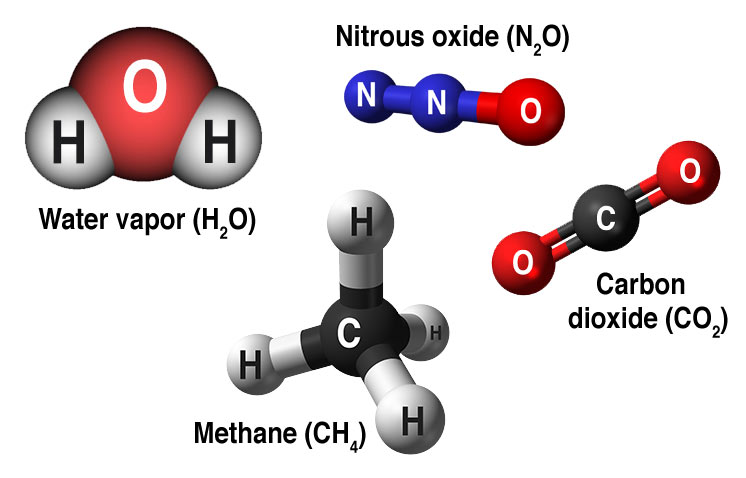
- Water vapor: It is the most abundant greenhouse gas, but it also functions as a climate feedback. As the Earth’s atmosphere warms, water vapour levels rise, but so do the chances of clouds and precipitation, making these two feedback mechanisms crucial to the greenhouse effect.
- Carbon dioxide (CO2): This minor but important component of the atmosphere is released by natural processes such as respiration and volcano eruptions, as well as by human activities like as deforestation, land use changes, and fossil fuel combustion. Since the start of the Industrial Revolution, humans have increased CO2 levels in the atmosphere by 48%. The most important long-term “forcing” of climate change is this.
- Methane: A hydrocarbon gas produced by natural and human sources, such as waste decomposition in landfills, agriculture, particularly rice production, and ruminant digestion and manure management linked with domestic cattle. Methane is a lot more active greenhouse gas than carbon dioxide molecule for molecule, but it is also far less plentiful in the atmosphere.
- Nitrogen dioxide (NO2): Soil cultivation activities, particularly the use of commercial and organic fertilisers, fossil fuel combustion, nitric acid production, and biomass burning, all produce a significant amount of this strong greenhouse gas.
- Chlorofluorocarbons (CFCs): Synthetic substances entirely of industrial origin utilised in a variety of uses, but now mostly restricted in manufacturing and release to the atmosphere due to their ability to contribute to ozone layer damage by international agreement. In addition, they are greenhouse gases.
The causes of climate change continued:
Human actions on Earth are altering the natural greenhouse. The burning of fossil fuels such as coal and oil has raised the concentration of carbon dioxide in the atmosphere over the last century (CO2). This occurs because the combustion of coal or oil produces CO2 by combining carbon in the air with oxygen. The clearing of land for agriculture, industry and other human activities has raised greenhouse gas concentrations to a lesser amount. Changes in the natural atmospheric greenhouse’s repercussions are difficult to forecast, however, the following effects appear to be likely:
- The Earth will become warmer on average. Warmer temperatures may be welcomed in some areas, but not in others.
- Warmer temperatures will almost certainly result in more evaporation and precipitation in general, but specific places will differ, with some being wetter and others getting dryer.
- A larger greenhouse effect will warm the ocean and cause glaciers and ice sheets to partially melt, raising sea levels. If the ocean heats, the water expands, adding to the rise in sea level.
- Outside of a greenhouse, increased atmospheric carbon dioxide (CO2) levels can affect crop yields in both positive and negative ways. Plant development may be aided by increased CO2 levels, according to some laboratory research. Other effects, such as shifting temperatures, ozone, and water and nutrient scarcity, may, however, more than offset any potential yield improvement. If certain crops’ ideal temperature ranges are exceeded, earlier production improvements may be decreased or reversed entirely.
How climate change plunders the planet?
- More heat alters Ice, Weather and Oceans
Here are a few high-profile examples of how increased warmth affects climate conditions and weather patterns:
- The cryosphere, or Earth’s frozen water, is thawing. The planet’s snowpack, glaciers, and sea and freshwater ice all melt quickly as the climate warms. Melting glaciers and polar ice sheets have contributed to a record-breaking rise in sea level. Melting sea ice reveals darker ocean waters, which absorb more sunlight than ice, thereby heating the ocean and speeding up the melting and heating cycle.
- The oceans are becoming more acidic as they become hotter, expand, and expand. They are becoming hotter as a result of absorbing 90% of the extra heat in the atmosphere. The oceans expand as a result of this shift, contributing to increased sea levels and robbing corals of their vibrant colours. Meanwhile, roughly a third of carbon dioxide emissions wind up in the oceans, causing a chemical shift that causes the water to become more acidic, causing sea creatures’ shells to dissolve. The ocean is over 40% more acidic than it was previously.
- The weather is becoming increasingly extreme. Heat waves are becoming more common all across the world. Increased water evaporation acts as a fuel for storms, amplifying extreme weather events like hurricanes. Storm surges will be significantly more damaging as sea levels rise. Droughts and wildfires are becoming more common in more naturally dry locations.

2. Human life and prosperity suffer
Our health, economy, livelihoods, infrastructure and much more waver:
- A big challenge to agriculture is climate change. Where, how, and when we grow food is inextricably linked to the natural rhythms of our climate. Farmers all over the world are battling to keep up with changing weather patterns and ever-changing water sources. Weeds, illnesses, and pests are more prone to assault farms, lowering yields. Crop yields are also threatened by extreme events, such as flooding or a lack of water.
- Our health is harmed by warmer, filthy air. In polluted areas, a warmer environment boosts the development of ground-level ozone, generally known as smog. Smog affects the lungs, causing asthma attacks. The air quality is further deteriorated by smoke from wildfires. During heat waves, more people die as a result of the extreme summer heat. Warmer freshwater facilitates the growth of disease-causing organisms (such as bacteria) that pollute drinking water.
- Transportation and infrastructure are in jeopardy. Hot weather, flooding, and other extreme weather events wreak havoc on infrastructure, strain electrical supplies, and cause disruptions in how we travel and commute.
One of the most recent cases is that of a Canadian woman who has been identified as suffering from ‘climate change for the first time in the globe. Doctors blame her health issue on the deadly heatwaves earlier this year, and a Canadian woman in her 70s could be the first patient to be diagnosed with ‘climate change.’ Dr Kyle Merritt of Kootenay Lake Hospital, who diagnosed the patient, told the Times Colonist how the heatwaves exacerbated the toll on patients who were already dealing with several health issues. Hundreds of people died as a result of record-breaking heatwaves in Canada and parts of the United States.
The heatwaves killed at least 233 people in British Columbia. The emergency situation was produced by a dome of high pressure over the Northwest, which was exacerbated by human-induced climate change, which is increasing the likelihood and intensity of extreme weather occurrences. The cause of the dome is unknown, but considering the heatwave’s duration, severity, and the fact that it is establishing new temperature highs a month early than the usual hottest time of year, climate change appears to be a factor. Heatstroke and heat exhaustion were more likely due to the extreme temperatures and humidity. Now the question is whether we really need to be concerned about “climate change.”
3. Natural Habitats become hostile
Habitats on land and at sea are changing, rendering certain species uncomfortable while allowing others to migrate in and take over. Some ecosystems are on the verge of extinction. Here are three well-documented examples of natural-world changes:
- There is ice. The need for Arctic wildlife is dwindling. Sea ice-dependent species like walruses and polar bears are struggling to survive as the ice melts. Because of global warming, the polar bear was the first animal to be added to the Endangered Species Act list of threatened species in 2008.
- Coral and shellfish are being harmed. Coral reefs are extremely sensitive to even little temperature fluctuations in the ocean. The heat puts a strain on the algae that feed the corals and give them their brilliant colours. The algae then flee, leaving the corals to starve — a phenomenon known as coral bleaching. Coral reefs are home to a variety of other species, including fish, and their demise would have far-reaching consequences for the entire ecosystem. In addition, a more acidic ocean disrupts the natural calcium balance, which means that species with calcified shells, such as shellfish and coral, may lack the calcium they need to flourish.
- Insect infestations are more common in forests. Tree-killing insects thrive in milder winters and longer summers. In the meantime, trees that have been harmed by chronic drought have weaker defence mechanisms. The tremendous die-off of 70,000 square miles of Rocky Mountain conifers is most likely the result of a cycle of warmer weather, weak trees, and thriving insects.
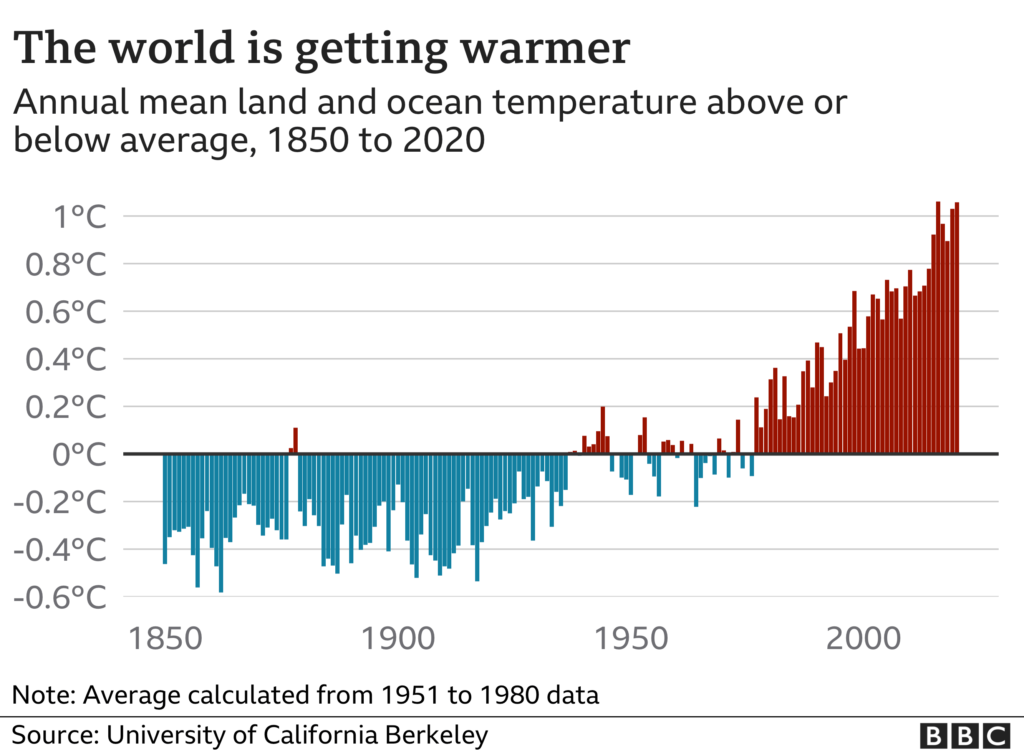
Scientists suggest that if we want to escape the worst effects of climate change, we need to cut down temperature rises. They claim that global warming should be kept to 1.5 degrees Celsius by 2100. However, unless additional measures are done, the globe may still warm by moreover 2 degrees Celsius by the end of the century. According to a forecast published in 2021 by the Climate Action Tracker organisation, the earth will warm by 2.4 degrees Celsius by the end of the century. Scientists believe that if nothing is done, global warming would approach 4 degrees Celsius in the future, resulting in severe heatwaves, millions of people losing their homes due to rising sea levels, and irreversible extinction of plant and animal species.
Droughts, floods, and excessive temperatures are examples of climate extremes that can cause crop losses and affect agricultural producers’ livelihoods as well as community food security around the world. Weeds, bugs, and fungi can thrive in warmer temperatures, wetter climates, and higher CO2 levels, depending on the crop and habitat, and climate change will likely increase weeds and pests.
Finally, while increased CO2 stimulates plant growth, research has revealed that it decreases the nutritional content of most food crops by lowering protein and critical mineral concentrations in most plant species. New pest and disease patterns may evolve as a result of climate change, impacting plants, animals, and humans and creating new dangers to food security, food safety, and human health. These are the factors that can contribute to climate change, which has detrimental repercussions for not only people but all living species.
One major example of how climate change has started to affect the Earth
More than 130 people have died suddenly in the Vancouver area, according to police. The majority were old or had underlying medical issues, with heat being a major role. On Tuesday, Canada set a new temperature record of 49.6 degrees Celsius (121.3 degrees Fahrenheit) at Lytton, British Columbia. The northwestern United States has also had record highs, as well as several fatalities. Extreme weather phenomena, such as heatwaves, are projected to become more common as a result of climate change, according to experts. However, it is difficult to attribute any particular incident to global warming.
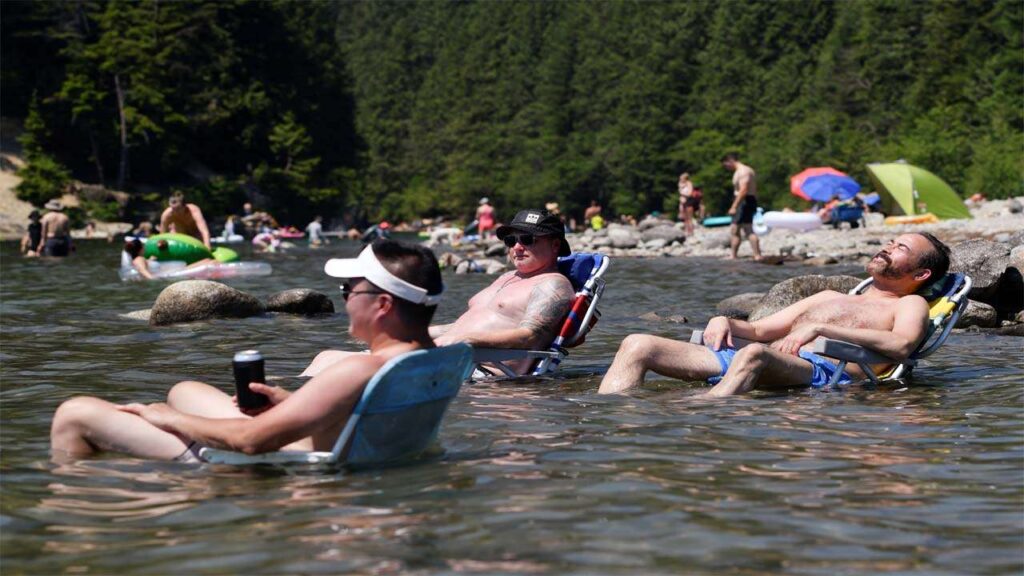
Premier John Horgan of British Columbia claimed the province’s hottest week has resulted in “disastrous effects for families and communities.” As several localities claim to have responded to sudden death situations but have yet to compile the figures, the number of heat-related deaths is likely to climb. Heat is suspected to have been a major factor in the deaths of 65 individuals in Vancouver alone since Friday.
How climate change could impact the global economy?
Climate change is a severe threat not only to the earth and its inhabitants but also to the global economy. This issue necessitates public-private sector partnership to shift the way we create commodities to alternate techniques that ensure and propel long-term economic prosperity. Climate change is one of the most serious challenges to economic stability, in addition to its serious impact on the environment and people. Heatwaves make us less productive and make us less able to work.
Hurricanes, cyclones, and typhoons wreak havoc on millions of people, leaving them penniless after sweeping their communities away. Droughts reduce harvests, adding to the difficulty of feeding the world’s growing population, which is estimated to reach 10 billion by 2050. (World Population Prospects 2019, United Nations Organisation). Climate change, according to the World Bank, could push 100 million more people into poverty by 2030 if we don’t act quickly.
How can we reduce and curb the effects of Climate change?
Now that the causes and consequences have been listed, the question arises is that how can climate change be curbed?
- Keep fossil fuels in the ground
- Curb methane emissions
- Switch to renewable energy like solar
- Abandon petrol and diesel
- Plant more trees
- Remove greenhouse gases from the air
- Give financial aid to help poorer countries: Many coal-dependent countries are facing severe energy shortages that jeopardise their recovery from Covid and disproportionately affect the poor. These factors stop them moving away from polluting industries.
What is the COP?
The COP is the Convention’s highest decision-making body. At the COP, all States that are Parties to the Convention are represented, and they review the Convention’s implementation, as well as any other legal instruments adopted by the COP, and make decisions necessary to promote the Convention’s effective implementation, including institutional and administrative arrangements. The evaluation of national communications and emission inventories presented by Parties is a major duty for the COP. The COP evaluates the effects of the actions adopted by Parties and the progress made toward the Convention’s ultimate goal based on this information.
Unless the Parties agree differently, the COP meets once a year. In March of 1995, the inaugural COP summit was held in Berlin, Germany. Unless a Party volunteers to host the session, the COP meets in Bonn, the secretariat’s headquarters. The COP Presidency alternates among the five designated UN areas — Africa, Asia, Latin America and the Caribbean, Central and Eastern Europe, Western Europe, and Others – and the COP venue tends to vary among these groupings as well.
What is COP26?
The United Nations Climate Change Conference (COP26) will take place in 2021. For nearly three decades, the United Nations has brought almost every country on the planet together for global climate summits, known as COPs (Conference of the Parties). Climate change has progressed from a minor concern to a worldwide priority in that time. The 26th annual summit, dubbed COP26, will take place this year. COP26 takes place in Glasgow, with the United Kingdom as President. In the run-up to COP26, the UK is collaborating with all nations to find a solution to climate change. For twelve days of discussions, world leaders will arrive in Scotland with tens of thousands of negotiators, government representatives, corporations, and individuals. It’s not only a massive undertaking, but it’s also not simply another international summit. The majority of experts feel COP26 has a special urgency. It’s important to go back to another COP to understand why.
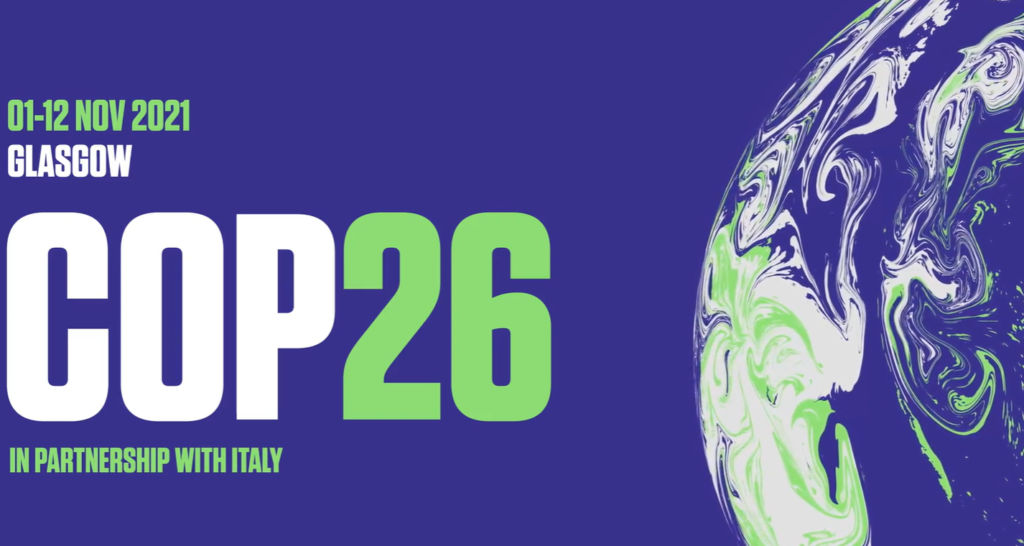
The importance of the Paris Agreement
For the first time in history, every country agreed to work together to keep global warming far below 2 degrees Celsius, with a goal of 1.5 degrees Celsius, to adapt to the effects of a changing climate, and to make money available to achieve these goals.
The Paris Agreement came into being. The goal of 1.5 degrees is critical because every fraction of a degree of warming will result in the loss of many more lives and the destruction of livelihoods. Countries pledged to bring forth national plans outlining how much they will reduce their emissions under the Paris Agreement, known as Nationally Determined Contributions, or ‘NDCs.’ They committed to revisit the plan every five years with an updated version that reflected their highest aspirations at the moment.
Goals needed to achieve at COP26?
- Secure global net zero by mid-century and keep 1.5 degrees within reach
- Adapt to protect communities and natural habitats
- Mobilise finance
- Work together to deliver
Was COP26 a success if a failure?
Greta Thunberg, a climate activist, called the COP26 climate summit a failure, accusing the United Nations-sponsored discussions of devolving into a public relations exercise. “It’s no secret that COP26 was a disaster. “It should be self-evident that we cannot fix the crisis using the same techniques that brought us here in the first place,” Thunberg remarked.
“The COP has devolved into a public relations event, with leaders giving lovely speeches and setting fancy commitments and targets, while governments in the Global North continue to refuse to take any significant climate action behind closed doors.” She was speaking on stage just after hundreds marched 1.6 miles from Kelvingrove Park to George Park in Glasgow’s city centre, less than 2 miles from where the COP26 event is being hosted, as part of a strike called by “Fridays For Future.”
Special envoy John Kerry of the United States, a 30-year veteran of climate geopolitics, said he “had never counted as many projects and as much money – real money – being put on the table.” Some argue it’s hypocrisy because world leaders flew to Glasgow for the COP26 meeting on 118 private aircraft, emitting over 1400 tonnes of CO2, while others say it’s a step toward making the world a better place and preventing serious consequences from climate change.
This information is correct and factual to the best of the author’s knowledge, but it is not intended to replace formal, customized advice from a competent professional. This content is not plagiarized, and it is not intended to offend anyone’s feelings.
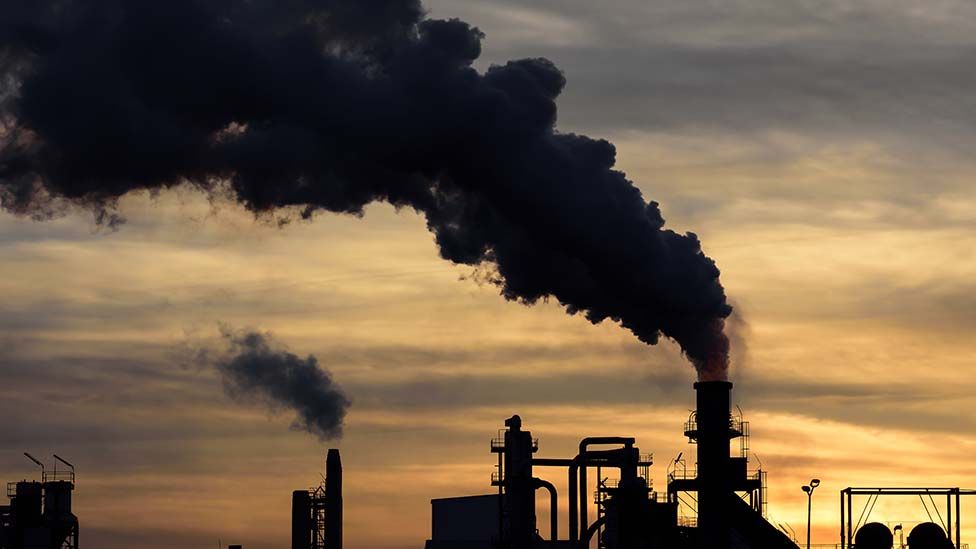


Very Good ,